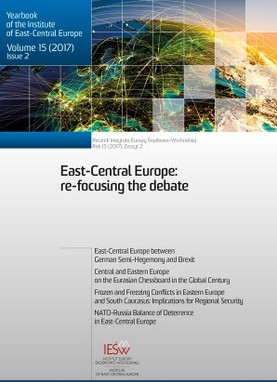NATO-Russia Balance of Deterrence in East-Central Europe
NATO-Russia Balance of Deterrence in East-Central Europe
Author(s): Rafał WiśniewskiSubject(s): International relations/trade, Security and defense, Military policy, Political behavior, Peace and Conflict Studies
Published by: Instytut Europy Środkowej
Keywords: NATO; Russia; deterrence; Eastern Flank;
Summary/Abstract: This paper aims to analyze a crucial feature of East-Central Europe’s (ECE) security environment—the balance of deterrence in NATO-Russia relations. This particular factor is the most influential among all on the regional order in the ECE. It stems from the fact that the Russian Federation is the preponderant military power in the region. The fear of possible Russian belligerence was the number one factor behind the desire of many countries in the region to join the Alliance. As a result, Russia and NATO constitute the most important actors in the regional security order in the ECE, a reality made even starker in the wake of the Ukraine crisis. Since that began, the Russia-NATO relationship has turned antagonistic. As open military conflict has (for now) been precluded as an option by both sides, it is the balance of deterrence between them that drives the evolution of ECE security. This paper first establishes an understanding of what constitutes the balance of deterrence and which factors are most important for it. Then, it assesses the current balance by identifying both sides’ aims and strategies. Finally, a picture of the impact of the balance on regional security emerges.
Journal: Rocznik Instytutu Europy Środkowo-Wschodniej
- Issue Year: 15/2017
- Issue No: 2
- Page Range: 99-122
- Page Count: 24
- Language: English

